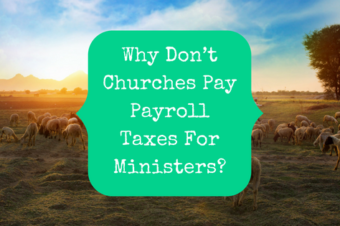
The most commonly asked question regarding the new tax reform bill that went into effect at the beginning of the year is, “How will it affect me?” Since everyone’s situation is different, no amount of searching on Google is going to give you the right answer.
The most accurate answer you can find will come from doing calculations based on your 2017 tax return. If you anticipate being in the same, or a similar, financial situation for 2018 as you were for 2017, then you can get a pretty good estimate of this coming year’s tax bill by looking at last years’ numbers. Here is how to do it:
1. Prepare Your 2017 Tax Return
In order to make an estimate for your 2018 taxes, you need your 2017 numbers. That means you actually have to do the work to prepare your return (or have someone else do it). Without your 2017 numbers, you will not be able to calculate your 2018 estimate.
2. Find Your Adjusted Gross Income
Once you’ve prepared your 2017 tax return, find the amount on line 38 of Form 1040, line 22 of Form 1040A, or line 4 of Form 1040EZ. Yes, it’s that easy.
3. Calculate Your Deduction
If you took the standard deduction on line 40 of Form 1040 or line 24 of Form 1040A or if you filed Form 1040EZ, then your 2018 deduction will be:
- $12,000 if you are single or married and filing separately
- $18,000 if you file as head of household
- $24,000 if you are married and file jointly
If you itemized your deductions on Schedule A and you deducted less than the standard deduction amounts above, use those numbers. Otherwise, subtract Schedule A lines 20 and 27 and anything over $10,000 on line 9 from your itemized deduction. This will be your deduction. If less than the amounts above, use those instead.
4. Calculate Your Tax
Subtract the deduction amount you came up with in Step 3 from your AGI from Step 2. This will be your taxable income. The more qualified dividends you have, the less accurate your calculations are going to be. Use the following tables to calculate your tax based on your taxable income:
Single
| If taxable income is between: | Your tax is: |
| $0 – $9,525 | 10% of taxable income |
| $9,526 – $38,700 | $952.50 + 12% of the amount over $9,525 |
| $38,701 – $82,500 | $4,453.50 + 22% of the amount over $38,700 |
| $82,501 – $157,500 | $14,089.50 + 24% of the amount over $82,500 |
| $157,501 – $200,000 | $32,089.50 + 32% of the amount over $157,500 |
Head of Household
| If taxable income is between: | Your tax is: |
| $0 – $13,600 | 10% of taxable income |
| $13,601 – $51,800 | $1,360 + 12% of the amount over $13,600 |
| $51,801 – $82,500 | $5,944 + 22% of the amount over $51,800 |
| $82,501 – $157,500 | $12,698 + 24% of the amount over $82,500 |
| $157,501 – $200,000 | $30,698 + 32% of the amount over $157,500 |
Married, Filing Jointly
| If taxable income is between: | Your tax is: |
| $0 – $19,050 | 10% of taxable income |
| $19,051 – $77,400 | $1,905 + 12% of the amount over $19,050 |
| $77,401 – $165,000 | $8,907 + 22% of the amount over $77,400 |
| $165,001 – $315,000 | $28,179 + 24% of the amount over $165,000 |
*These are not complete charts, I omitted higher incomes for simplicity.
Example: You are single with a taxable income of $42,000. Your tax will be:
4,453.50 + .22(42,000 – 38,700) =
4,453.50 + .22(3,300) =
4,453.50 + 726 =
$5,179.50 tax
5. Adjust For Credits & Self-Employment Taxes
Make the following changes to the tax you calculated in Step 4:
- If you have children 17 and under, subtract $2,000 from your tax per child. If that is more than the tax you owe, you can get back up to $1,400 per child.
- If you are eligible for the Earned Income Tax Credit (line 66a on Form 1040, line 42a on Form 1040A or line 8a on Form 1040EZ), subtract that from your tax. It is also refundable if you do not owe taxes.
- Add your self-employment taxes (line 57 on Form 1040) to the tax you calculated in Step 4.
There you have it, your estimated tax for 2018. Now you finally get to see if the tax bill will be good or bad for your wallet. Remember, though, this is only an estimate and you may have other factors, such as medical expense, qualified dividends, etc. that will significantly alter your results.
For me personally, it was almost a wash until I subtracted the new-and-improved child tax credit. I knew I loved those little boogers. Now, I anticipate a lower tax bill for 2018.
How about you? Based on these estimates, is the new tax bill good or bad for you? Let us know in the comments.




2 Responses
jerry whitmire
March 12, 2018In informing on estimating 2018 taxes I did not notice any mention of the ‘Housing Allowance Exclusion.’ Is that still available for 2018 ? Thanks JRW
Amy
March 13, 2018Yes, as of right now, no changes have been made to the ministerial housing allowance.